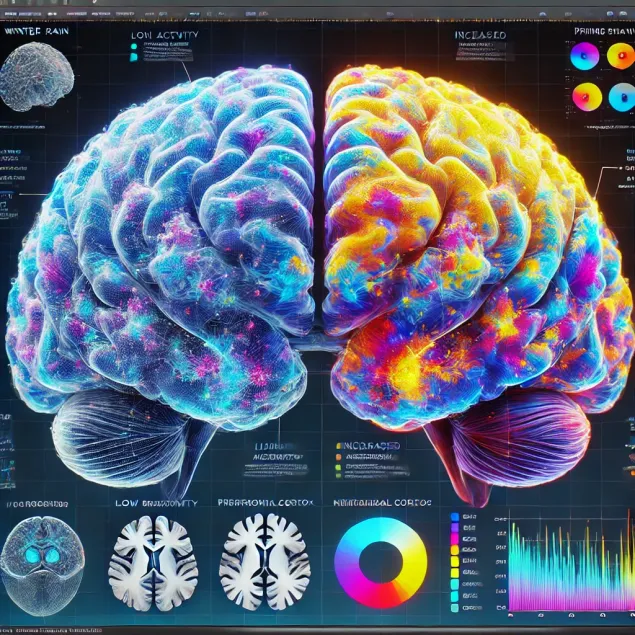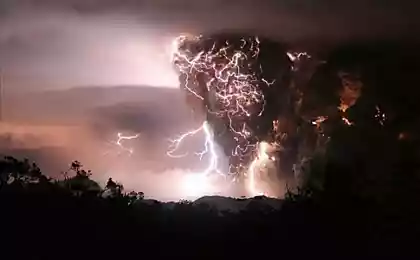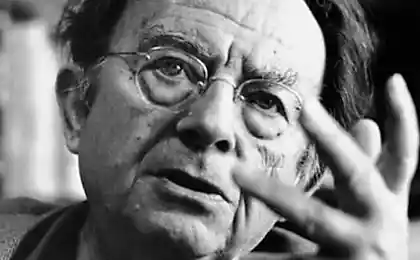190
Weather and mood: The Invisible Connection of Nature and the Psyche

Have you noticed how your mood changes when the sun comes out after weeks of cloudy skies? Or how depression rolls on rainy days, and with the first snow comes a strange excitement? The connection between weather and our emotional state is not a figment of the imagination; it is a scientifically proven phenomenon with evolutionary roots and neurobiological foundations.
“Weather forms not only the landscapes of the planet, but also the landscapes of our psyche, sometimes penetrating into the deepest layers of perception. ?
In this article, we explore the amazing mechanism of interaction between atmospheric phenomena and the human psyche, as well as uncover the scientific underpinnings of these relationships, which can dramatically change your understanding of your own emotional reactions.
Biological mechanisms of weather sensitivity
Human evolution has always been dependent on weather. Our ancient ancestors built their lives based on seasonal cycles and atmospheric phenomena. Not surprisingly, our bodies have evolved a complex system to respond to meteorological changes.
Hormonal restructuring and photoperiodism
Sunlight directly affects the production of serotonin and melatonin, hormones that regulate mood and sleep cycles. As daylight increases in the spring, our body begins to produce more serotonin, a neurotransmitter responsible for happiness and well-being. According to research from Brigham Young University, even 15 minutes of exposure to the morning sun can significantly increase serotonin levels.
Studies show that in countries with long periods of darkness, such as the Scandinavian countries, the prevalence of seasonal affective disorder (SAD) reaches 20% of the population, while in regions closer to the equator, this figure rarely exceeds 2%.
Barometric sensitivity
Our body responds to changes in atmospheric pressure at the cellular level. Baroreceptors located in joints, blood vessels and tissues transmit signals to the brain, which interprets them as specific sensations. A sharp drop in pressure before a thunderstorm can cause meteosensitive people a state of increased anxiety, and consistently high pressure on sunny days contributes to a sense of energy and optimism.
Spring mental transformation
The transition from winter to spring represents one of the most noticeable psychological fractures in the annual cycle. The phrase “After winter always comes spring” is not just a poetic metaphor, but an accurate description of the psychophysiological process of renewal.

The Neurobiological Renaissance
With the arrival of spring, significant changes occur in the brain. The production of dopamine, a neurotransmitter of pleasure and motivation, increases. This explains why in the spring we often experience a surge of energy and enthusiasm, a desire to start new projects or engage in creativity.
A study of neuroscientists from Stanford University showed that spring changes also affect the hippocampus, the brain region responsible for the formation of new memories and learning. Perhaps this is why spring is often associated with a period of new beginnings and transformations.
“Spring neurochemical balance updates can be compared to a computer reboot – the system clears from winter restrictions and starts working at full capacity.” ?
Weather archetypes in the psyche
Various weather events form stable psychological archetypes that are deeply rooted in our collective unconscious. These archetypes influence how we perceive the world and ourselves in it.
Sunny Days: The Archetype of Revival and Optimism
The sun in many cultures symbolizes energy, vitality and optimism. It is not surprising that sunny days activate the corresponding patterns of perception in our psyche. We become more open to new experiences, more willing to engage in social interactions, and more willing to take risks.
Rain: The Archetype of Purification and Introversion
Rainy weather stimulates introspection and reflection. The sound of rain acts on our brain calmingly, activating alpha waves associated with a state of calm wakefulness. Many creative people note that it is on rainy days that inspiration and deep analysis come to them.
Snow: The archetype of transformation and clean slate
The first snow causes a special emotional state - a mixture of nostalgia, anticipation and peace. Psychologically, snow cover is a metaphor for a clean slate, an opportunity to start all over again. This explains why even in adulthood, many people experience childhood delight at the sight of the first snow.
Practical recommendations: How to Use Weather to Improve Your Psychological Status
- Seasonal planning: Plan important projects with seasonal changes in your productivity. Spring is ideal for starting new projects that require creativity and enthusiasm.
- Light therapy: In the autumn-winter period, use special lamps that simulate natural light. Just 30 minutes a day can significantly improve your mood.
- Weather awareness: Keep a journal noting the connection between the weather and your mood. After a few months, you’ll be able to identify patterns and better prepare for seasonal changes.
- Adaptive strategies: Develop a set of strategies for different weather conditions. For example, for cloudy days, prepare a list of inspirational movies or books.
- Chromotherapy: Use colors to compensate for the lack of certain weather conditions. Warm shades (orange, yellow) will help on cloudy days, and cool (blue, green) will create a feeling of freshness in the heat.
Meteosensitivity: Curse or gift?
Hypersensitivity to weather changes is often perceived as a disadvantage, but evolutionary psychologists believe it could be a valuable adaptive mechanism. In ancient times, people with high weather sensitivity could predict weather changes and alert the community to dangers such as approaching storms or cold snaps.

A study by researchers at the University of Tokyo found that people with high weather sensitivity showed higher rates of empathy and emotional intelligence. Perhaps sensitivity to subtle changes in the environment is associated with a more developed ability to detect changes in the emotional states of others.
If you notice a pronounced reaction to weather changes, try using this feature as a resource: develop intuition, creative thinking and empathic abilities.
Conclusion: Meteorhythms of life
The relationship between weather and mood is a complex and multifaceted system of interactions involving biochemical, psychological and cultural factors. Understanding this connection gives us not only insight into how our psyche works, but also practical tools to improve our quality of life.
The phrase “After winter always comes spring” reminds us of the cyclical nature of not only external weather conditions, but also our internal states. Periods of psychological winter inevitably give way to spring renewal, if we learn to tune in to the natural rhythms of nature and benefit from each season.
Allow yourself to be meteosensitive – this is not a weakness, but a special gift of perceiving the world in all its changing beauty. Watch how your mood changes with the weather, and use these observations to gain a deeper understanding of yourself and your needs.
Glossary
Meteorological sensitivity
Increased sensitivity of the body to changes in meteorological factors (atmospheric pressure, humidity, air temperature), manifested by physiological and psychological reactions.
Photoperiodism
The reaction of the body to seasonal changes in the duration of daylight, affecting hormonal background, metabolism and psychological state.
Seasonal affective disorder (SAD)
A type of depression characterized by a seasonal nature of manifestation, usually beginning in autumn or winter and ending in spring or early summer.
Biorhythms
Cyclic fluctuations in the intensity and nature of biological processes and phenomena in living organisms, including humans. Includes daily, seasonal and other cycles.
Baroreceptors
Sensory nerve endings that respond to changes in pressure (including atmospheric pressure) and transmit appropriate signals to the central nervous system.
chromotherapy
A method of alternative medicine based on the use of flowers and their effect on the psychological and physiological state of a person.
The collective unconscious
A term coined by Carl Jung denotes the part of the unconscious that is common to people of all cultures and contains archetypes—universal psychic images.
State and Mafia: Points of Intersection and Fundamental Differences
What does a person need to understand by adulthood?























